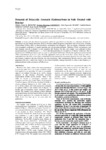Por favor, use este identificador para citar o enlazar este ítem:
http://www.alice.cnptia.embrapa.br/alice/handle/doc/1054746Registro completo de metadatos
| Campo DC | Valor | Lengua/Idioma |
|---|---|---|
| dc.contributor.author | RESENDE, M. F. de | pt_BR |
| dc.contributor.author | NOVOTNY, E. H. | pt_BR |
| dc.contributor.author | BRASIL, T. F. | pt_BR |
| dc.contributor.author | PEREIRA NETTO, A. D. | pt_BR |
| dc.contributor.author | MADARI, B. E. | pt_BR |
| dc.date.accessioned | 2016-10-17T11:11:11Z | pt_BR |
| dc.date.available | 2016-10-17T11:11:11Z | pt_BR |
| dc.date.created | 2016-10-17 | pt_BR |
| dc.date.issued | 2016 | pt_BR |
| dc.identifier.citation | In: INTERNATIONAL CONFERENCE OF INTERNATIONAL HUMIC SUBSTANCES SOCIETY, 18., 2016, Kanazawa. Keystone for future earth: natural organic matter (NOM) in diverse environments: proceedings. Kobe: IHSS: Kobe University, 2016. | pt_BR |
| dc.identifier.uri | http://www.alice.cnptia.embrapa.br/alice/handle/doc/1054746 | pt_BR |
| dc.description | In recent years the interest in pyrogenic carbon for agricultural use (biochar, i.e. carbonized biomass for agricultural use) has sharply increased. However biochar contain dangerous compounds such as Polycyclic Aromatic Hydrocarbons (PAHs), many of them potentially carcinogenic and mutagenic. They are organic compounds formed from incomplete combustion of organic materials and are persistent pollutants. Therefore, PAHs concentrations and their dynamic must be evaluated in soils amended with biochar. For this, soil samples were collected in three experimental areas in different years (1, 3, 5 or 6) after the application of 0 (control) or 16 Mg ha-1 of biochar. This is the first report of PAHs persistence up to six years in soil treated with biochar. The biochar application increased total PAHs concentrations up to five years after the application, however the levels have always been an order of magnitude lower the limits of prevention established by International Environmental Agencies for soils. Thus, under the evaluated conditions ,the use of biochar was safe concerning PAHs contamination, besides, after six years of the application, the levels found were similar to the control treatment, making it possible to define a safe frequency of application based on the persistence of PAHs in soil. | pt_BR |
| dc.language.iso | eng | eng |
| dc.rights | openAccess | eng |
| dc.subject | Carbono pirogênico | pt_BR |
| dc.subject | Hidrocarbonetos aromáticos policíclicos | pt_BR |
| dc.subject | Espectrometria de massa | pt_BR |
| dc.title | Dynamic of polycyclic aromatic hydrocarbons in soils treated with biochar. | pt_BR |
| dc.type | Artigo em anais e proceedings | pt_BR |
| dc.date.updated | 2017-02-07T11:11:11Z | pt_BR |
| dc.subject.thesagro | Cromatografia Gasosa | pt_BR |
| dc.subject.nalthesaurus | biochar | pt_BR |
| riaa.ainfo.id | 1054746 | pt_BR |
| riaa.ainfo.lastupdate | 2017-02-07 | pt_BR |
| dc.contributor.institution | MICHELE FABRI DE RESENDE | pt_BR |
| dc.contributor.institution | ETELVINO HENRIQUE NOVOTNY, CNPS | eng |
| dc.contributor.institution | TAILA FIGUEREDO BRASIL, UFMG | eng |
| dc.contributor.institution | ANNIBAL DUARTE PEREIRA NETTO, UFF | eng |
| dc.contributor.institution | BEATA EMOKE MADARI, CNPAF. | eng |
| Aparece en las colecciones: | Artigo em anais de congresso (CNPS)  | |
Ficheros en este ítem:
| Fichero | Descripción | Tamaño | Formato | |
|---|---|---|---|---|
| 2016050.pdf | 147.21 kB | Adobe PDF |  Visualizar/Abrir |









